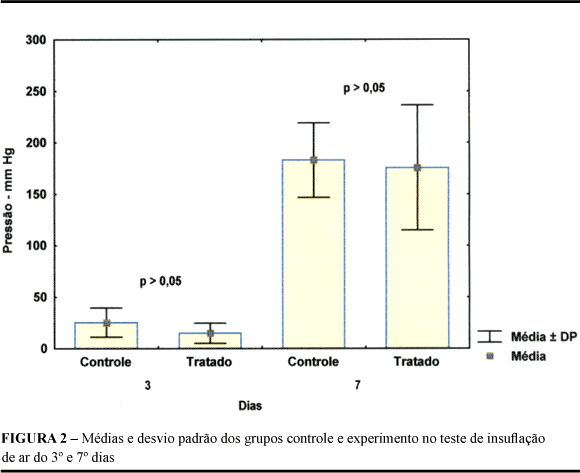INTRODUCTION: Healing is a highly complex process with different phases. Because some medicinal plants have antiinflamatory properties, they could influence the wound healing process. There are many species of medicinal plants used for research, among them the Orbignya phalerata (Babassu). PURPOSE: To analyze, comparatively, the tensiometric and histologic alterations in the healing process of colon anastomosis with the use of aqueous extract of the babaçu mesocarp. METHODS: Forty Wistar male rats were used, divided in two groups of 20 animals named control and experimental group. Each group was further divided in two sub-groups of 10 animals and evaluated on the third and seventh post-operative days. Colotomy and one suture line coloraphy was performed in all animals. The control group received an intraperitoneal single dose of isotonic saline solution at the time of the surgery. The animals from the experimental group received babassu aqueous extract dose with 50mg/kg/weight, concentration of 25 mg/ml dose, with the same administration method. The following parameters were evaluated: a) macroscopic appearance of abdominal wall and cavity; b) tensiometric evaluation of anastomosis (bursting pressure); c) histologic characteristics of anastomosis. RESULTS: The macroscopic examination showed the presence of adherences in all animals with statistical significance in the ones from the experimental group at third day when compared to the control group. No difference was observed in the seventh-day group. No fistulae, abscesses and/or hemorrhage were observed. In regard to the tensiometric variation, the bursting pressure for the control and experimental groups, both for the third day (25.4 mmHg - 14.8 mmHg) and at seventh (183 mmHg - 175 mmHg), were similar with no significant difference. Histological analysis for the third day showed significant difference in the experimental group in relation to the controls, in regard the presence ofto mononuclear ones whereas at seventh day there was significant statistical difference in all variables from the experimental group compared to the control one. CONCLUSION: A favorable effect with administration of the aqueous extract of the babaçu mesocarp was seen in histological parameters of the healing process of colon anastomosis however there was no difference in the tensiometric evaluation between the control and experimental group.
Wound Healing; Vegetable Fats; Anastomosis Surgical; Colon; Wistar rats











